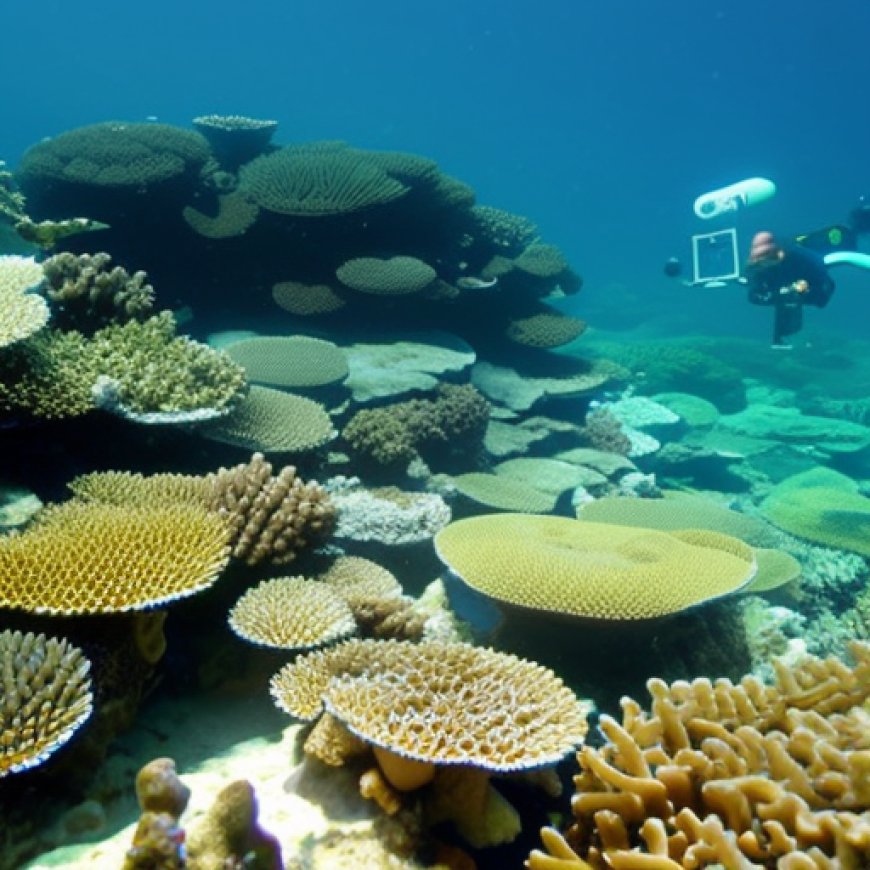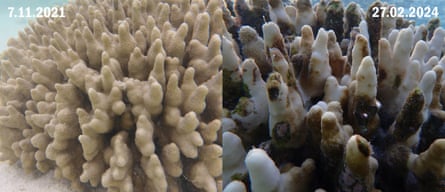Fifth mass coral bleaching event in eight years hits Great Barrier Reef, marine park authority confirms
Fifth mass coral bleaching event in eight years hits Great Barrier Reef, marine park authority confirms The Guardian


The Great Barrier Reef Faces Fifth Mass Coral Bleaching Event
The Great Barrier Reef is currently experiencing a mass coral bleaching event, driven by global heating. This is the fifth such event to occur in just eight years, according to the marine park’s government authority.
The authority, in collaboration with scientists from the Australian Institute of Marine Science, has conducted aerial surveys across 300 reefs, covering two-thirds of the reef, with more surveys planned.
In an update, the authority stated, “These surveys confirm a widespread, often called mass, coral bleaching event is unfolding across the Great Barrier Reef.”
Extent of the Bleaching

Researchers and scientists are devastated by the bleaching, especially in the southern section of the reef, where centuries-old corals have been severely affected.
Dr. Roger Beeden, the chief scientist at the Great Barrier Reef Marine Park Authority, stated, “We now have widespread, often called mass, coral bleaching across the surveyed reefs.” He attributed the bleaching to global heating and an El Niño climate pattern.
The Great Barrier Reef and Sustainable Development Goals
The Great Barrier Reef, the largest coral system in the world, spans approximately 2,300km and covers an area larger than Italy. It consists of around 3,000 individual reefs.
Mass bleaching events have occurred in the Great Barrier Reef in 1998, 2002, 2016, 2017, 2020, 2022, and now in 2024.
According to Coral Reef Watch data, ocean temperatures around the world have been at record highs for nearly a year. The US government’s Coral Reef Watch
SDGs, Targets, and Indicators
1. Which SDGs are addressed or connected to the issues highlighted in the article?
- SDG 13: Climate Action
- SDG 14: Life Below Water
2. What specific targets under those SDGs can be identified based on the article’s content?
- SDG 13.2: Integrate climate change measures into national policies, strategies, and planning.
- SDG 14.2: Sustainably manage and protect marine and coastal ecosystems to avoid significant adverse impacts.
3. Are there any indicators mentioned or implied in the article that can be used to measure progress towards the identified targets?
- Indicator for SDG 13.2: Number of countries with integrated policies, strategies, and planning for climate change mitigation, adaptation, impact reduction, and early warning.
- Indicator for SDG 14.2: Proportion of coastal and marine areas protected to conserve biodiversity and ecosystem services.
SDGs, Targets, and Indicators
| SDGs | Targets | Indicators |
|---|---|---|
| SDG 13: Climate Action | 13.2: Integrate climate change measures into national policies, strategies, and planning. | Number of countries with integrated policies, strategies, and planning for climate change mitigation, adaptation, impact reduction, and early warning. |
| SDG 14: Life Below Water | 14.2: Sustainably manage and protect marine and coastal ecosystems to avoid significant adverse impacts. | Proportion of coastal and marine areas protected to conserve biodiversity and ecosystem services. |
Behold! This splendid article springs forth from the wellspring of knowledge, shaped by a wondrous proprietary AI technology that delved into a vast ocean of data, illuminating the path towards the Sustainable Development Goals. Remember that all rights are reserved by SDG Investors LLC, empowering us to champion progress together.
Source: theguardian.com

Join us, as fellow seekers of change, on a transformative journey at https://sdgtalks.ai/welcome, where you can become a member and actively contribute to shaping a brighter future.







